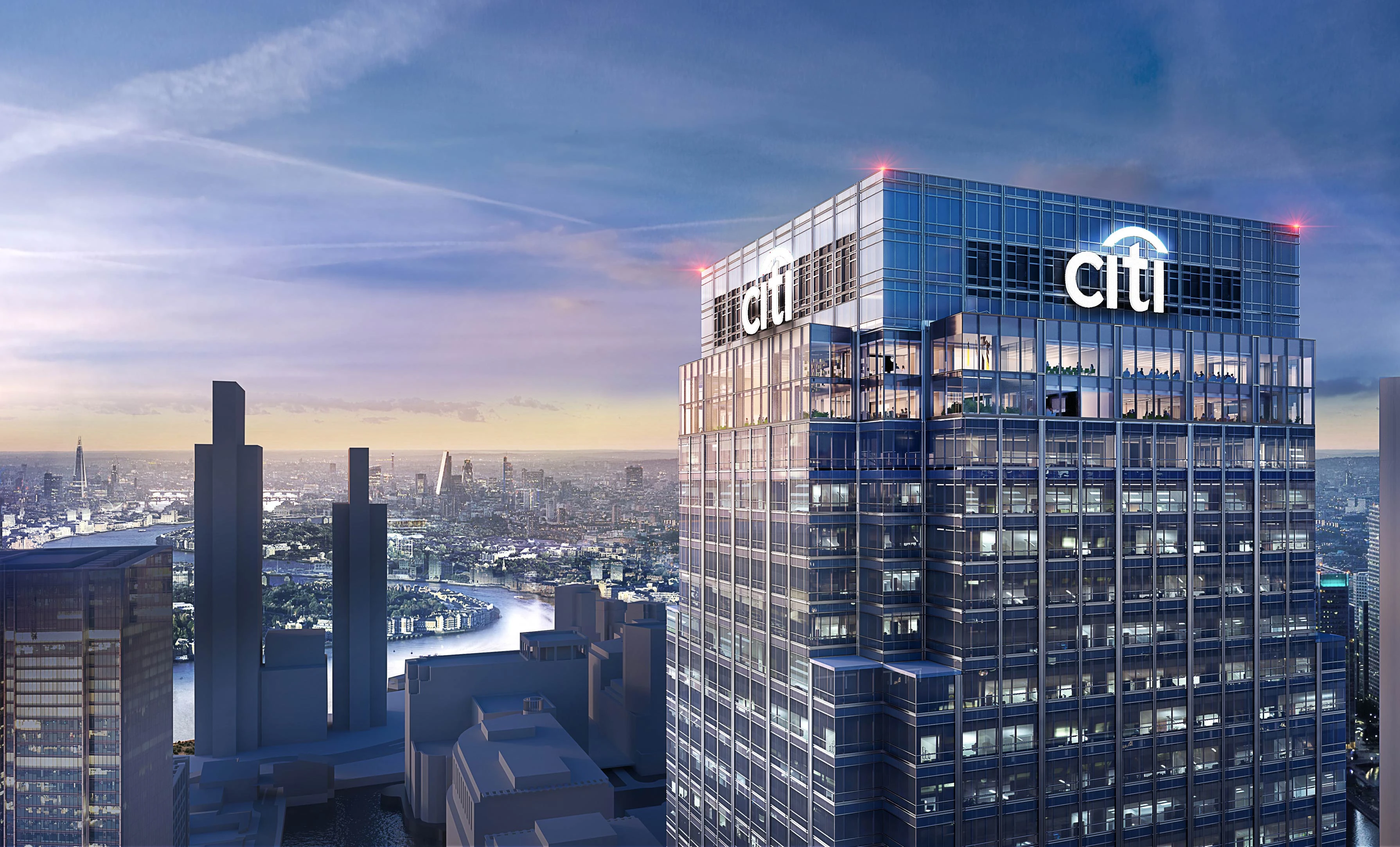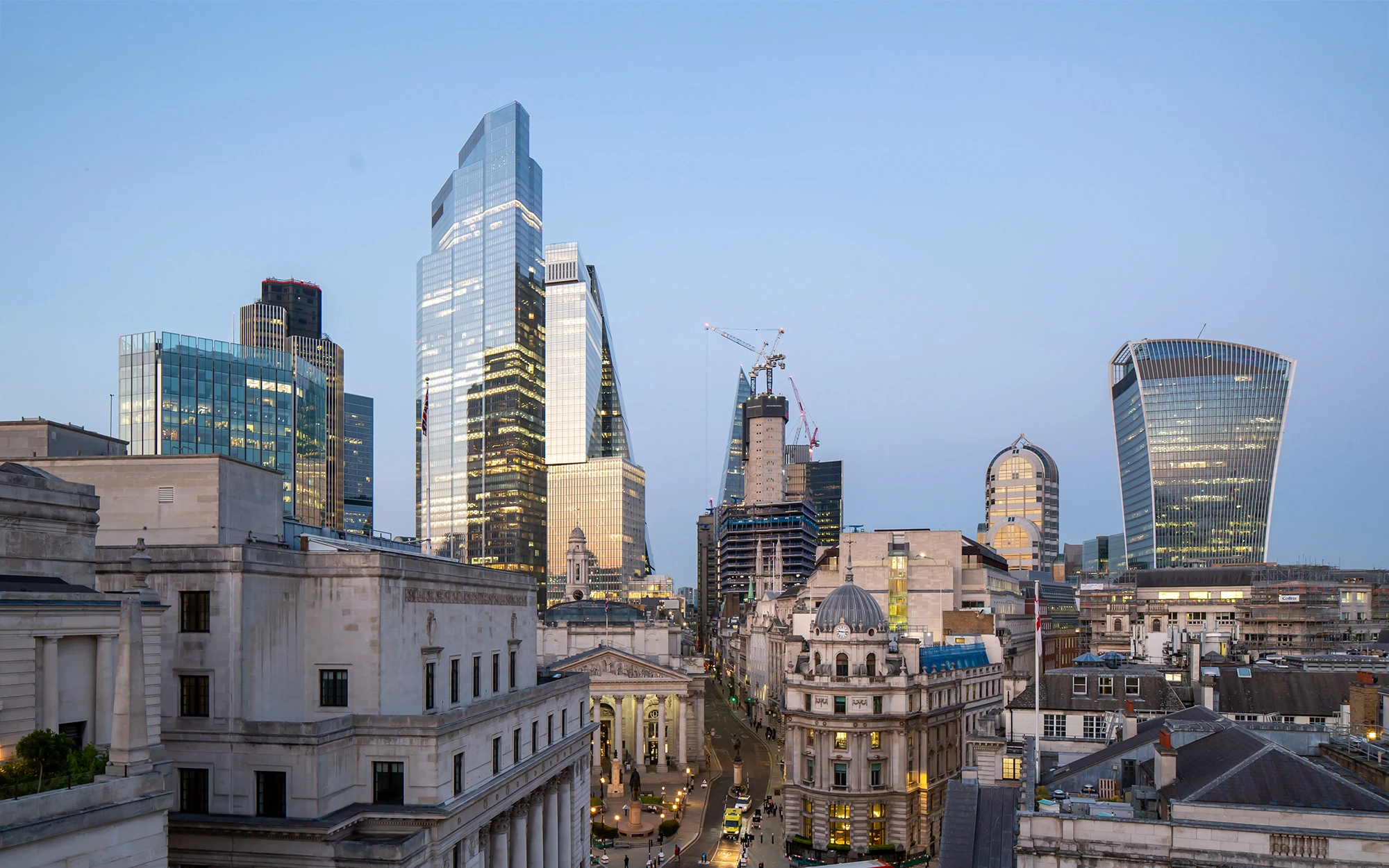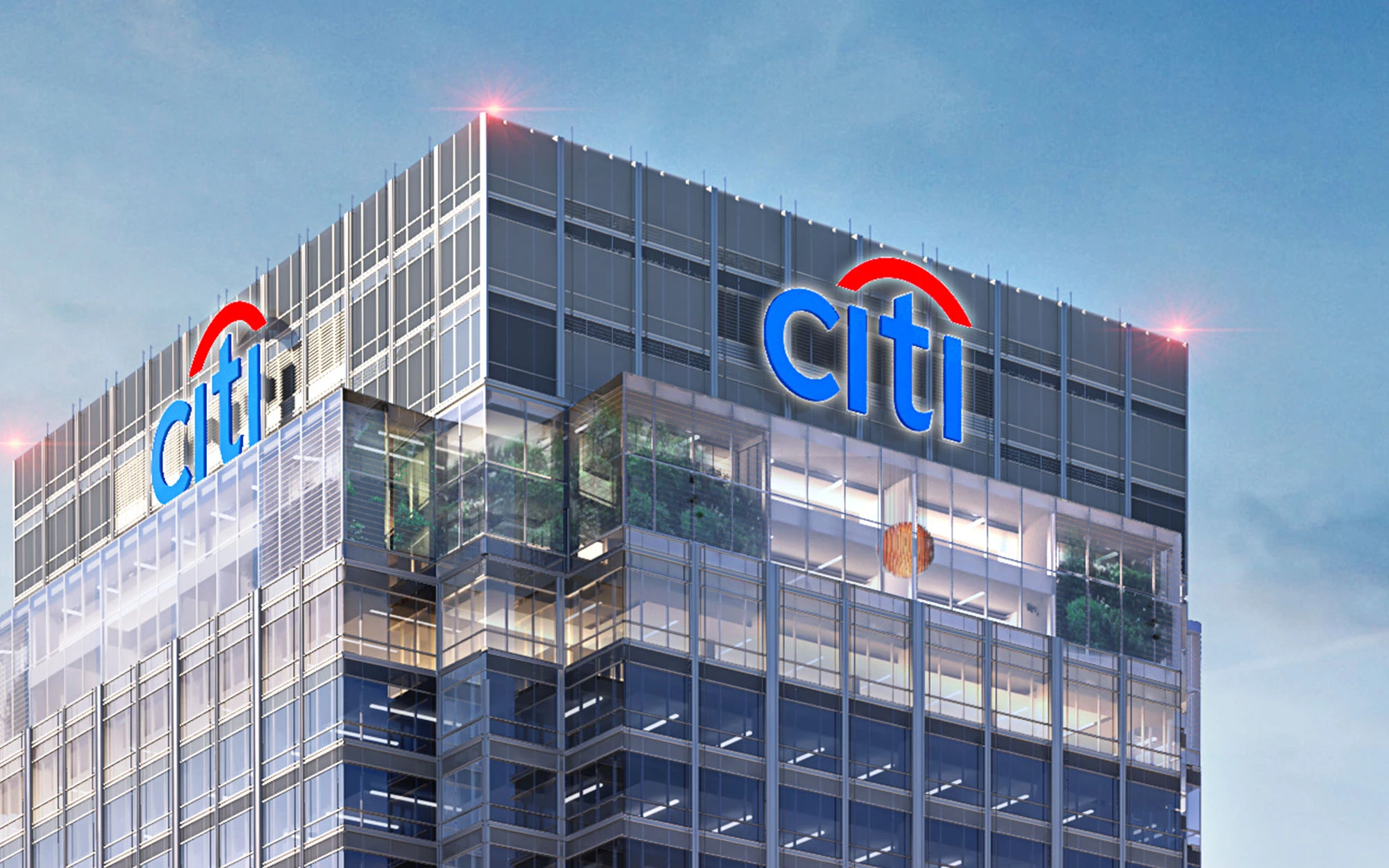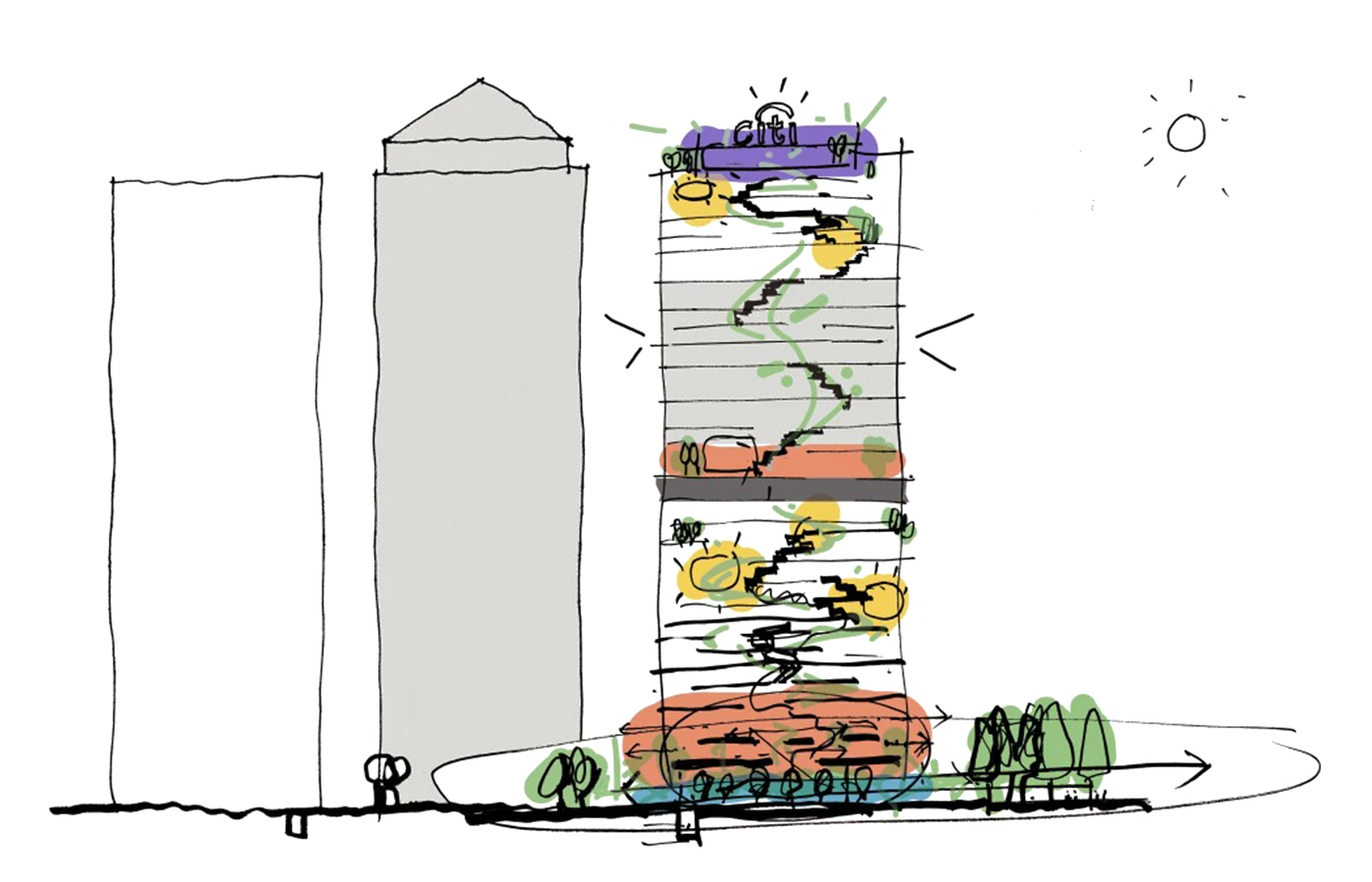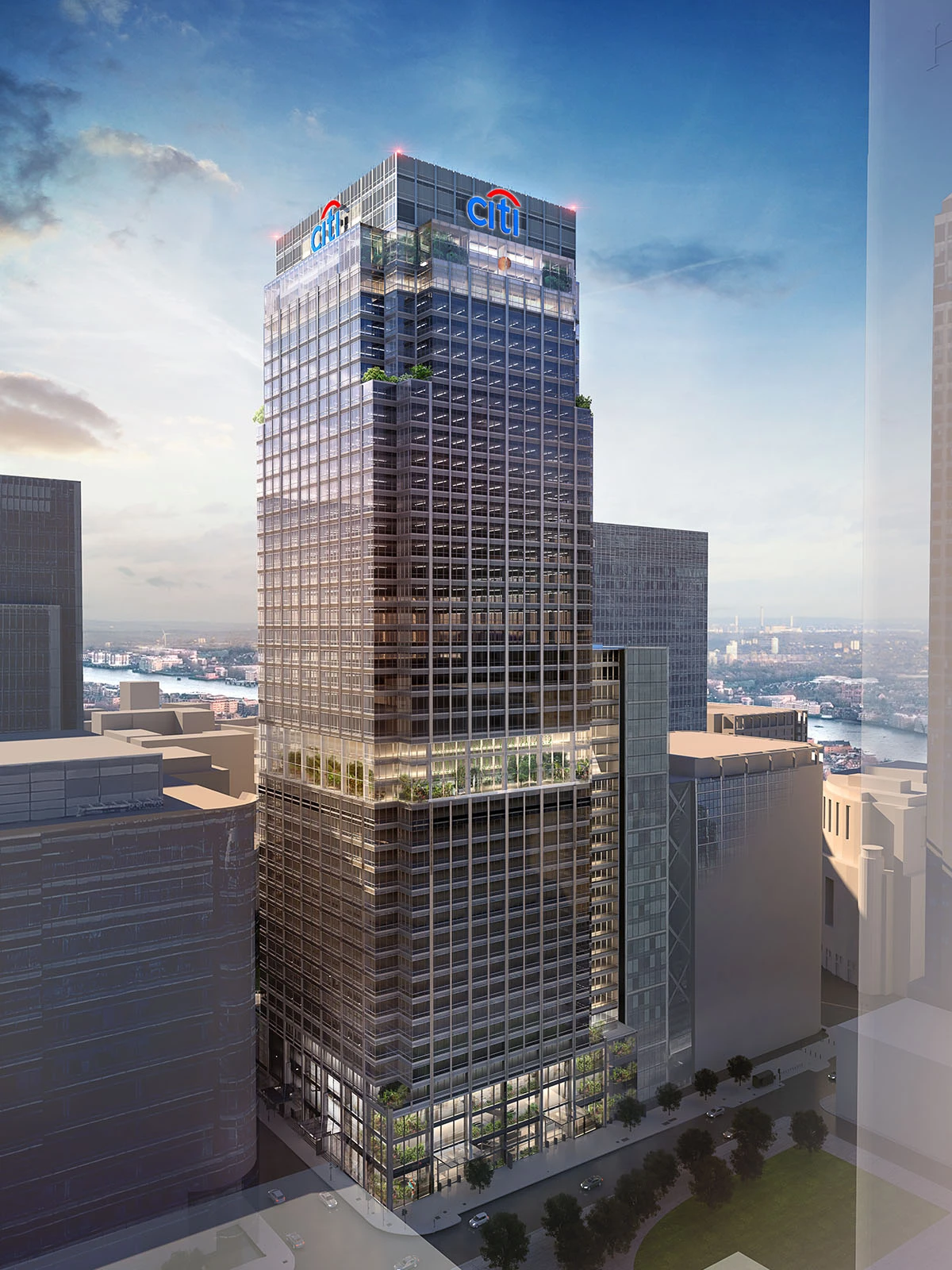
Being asked by a client to create a sustainable and unique working environment that promotes wellbeing and collaboration, as well as value, is challenge enough, but when the canvas for the project is an existing 42 storey tower a wealth of other challenges arise - but alongside them come opportunities.
The courageous decision by Citi to purchase and refurbish their London HQ, a tower from 2001 originally designed by Cesar Pelli, into their new EMEA HQ gives a strong message about both their commitment to London as a global financial centre and also their commitment to sustainability.
The concept of Vertical Communities was developed by WilkinsonEyre in response to both the existing building and the brief from Citi at competition stage – centring on opening up the building and dissolving the existing layers through the creation of ‘hubs’ across multiple inter-connected floors. The design of these spaces focuses around the principles of People, Place and Time. This strategy not only integrates similar business functions together – encouraging collaboration and forcing spaces to work much harder – but it also provides us an opportunity to break the rhythm of the Tower at the bottom, middle and top with accessible amenity spaces for staff and visitors, blurring the distinction between ‘work’ space and amenity space. The vision is one where workers are no longer confined to desks, and the user experience is significantly enhanced and more outward looking.
But how do we deliver all of this in a building that is nearly 200 metres high and full of people?
The constraints of the existing building – including tight floor to floor heights – led to the inclusion of well-considered interventions to open the existing slabs and create more generous volumes, dissolving segregation between floors and promoting more human interaction. Adding staircases to the heart of each ‘working village’ encourages active circulation – in line with wellness principles – and reduces dependency on the existing lift infrastructure, avoiding a presumed need to add in new shafts.
However, creating holes in existing buildings creates inherent problems, including concerns around fire protection and escape, structural impacts and construction logistics. Removing floor area has to be justified but the value added – unique, flexible, contemporary workspace – outweighs any perceived loss on returns. This is particularly relevant at the three key intervention points at the top, middle and bottom of the tower. Still working within the existing framework of the building, changes are visible on the external canvas of the Tower that reinforce Citi’s bold interventions, amounting to a brand revision in themselves. Most prominent are the triple height wintergardens, that sit above the existing plantroom floors, and internal gardens at the top of the tower which have been created by infilling underutilised external terraces. These unique and calm breathing spaces 41 stories above ground will boast some of the best views across London.
With the proposals for Citi Tower in place we are now working with a highly talented and expert team to deliver our vision for this pioneering exercise in high rise refurbishment, including a strategy to decant staff for the four year refurbishment period. The challenges are great, but the opportunities are greater. The responsible utilisation of our stock of tall buildings demands it will become essential that refurbishments on this scale become the norm for asset managers across the globe. This has to be what the future looks like for both workplace and the construction industry.
